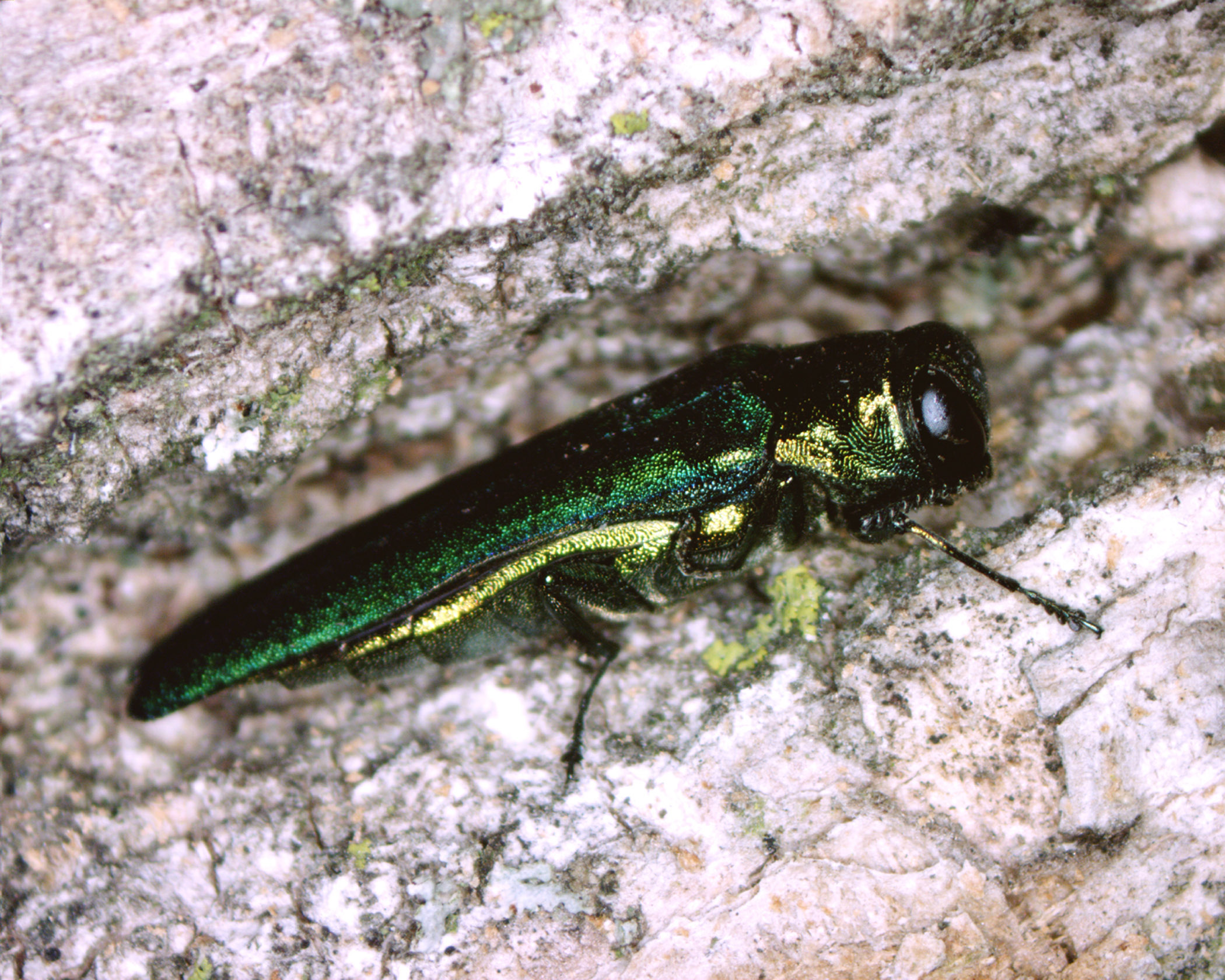Gardeners are being asked to keep a lookout for the most destructive and economically damaging forest pest in North America, which was recently confirmed to have arrived in Oregon.
The emerald ash borer (Agrilus plagripennis Fairmaire, or EAB) is a shiny, metallic green beetle, about ½ inch long, that has killed hundreds of millions of ash trees in North America, costing municipalities, property owners, nursery operators and forest products companies billions of dollars in damage.
State officials are asking the public to watch out for this insect and report any sightings immediately. State officials want to know where and how quickly it has spread, so they can try to contain it and prevent further damage. The place to report any sightings is https://oregoninvasiveshotline.org/reports/create.
The nursery industry is cooperating in efforts to deal with the impacts of this pest.
“This is devastating news for everyone who loves and depends on trees,” said Jeff Stone, executive director of the Oregon Association of Nurseries. “Oregon’s nursery industry is well known for working together with partners. We will work hand in hand with the ODA to fight the proliferation of this damaging pest.”
The bugs are harmless to people, animals, and most plant life, but not ash trees. Although the adults mainly nibble on leaves, the larvae feed on the inner bark of ash trees, destroying the vascular system and ultimately killing the tree. When the larvae turn into adults, they leave a D-shaped exit hole in the bark as they emerge in the spring. The pest can also infest American fringe trees (Chionanthus virginicus) and European olive trees.
The EAB is native to Asia. It has been present in North America since it was first detected in Michigan in 2002. It likely arrived on shipping crates from Asia. Since then, it has spread across the Midwest, the East Coast and the South. The ash tree was once a dependable staple of urban forestry, and cities with a heavy ash presence have been particularly hard hit.
However, Oregon and the West Coast had been spared until the pest was detected and confirmed in Forest Grove on June 30. That’s particularly bad news in Oregon, where the Oregon ash tree (Fraxinus latifolia) is native.
Dominic Maze was waiting outside a summer camp in Forest Grove to pick up his children when he noticed several ash trees in decline. He took a closer look and saw the distinctive, D-shaped hopes the insects make. As an invasive species biologist for the City of Portland, he knew exactly what that meant. He was familiar with EAB and signs of it in ash trees through educational materials federal and state agencies have been providing to Portland and other Oregon cities.
“When my kids arrived, I asked them to look for adult beetles,” Maze said. “My son promptly found one crawling on him. Knowing how many millions of ash trees across the country these beetles have killed, I felt like I was going to throw up.”
Right away, he called the Oregon Department of Forestry’s (ODF) Forest Health Unit to report the sighting. ODF Forest Entomologist Christine Buhl drove to the site that same day and confirmed it. Her identification was verified later by two additional invasive species specialists – Max Ragozzino with the Oregon Department of Agriculture, and Wyatt Williams with ODF.
The infested ash trees in Forest Grove were cut down and chipped within 48 hours of discovery. ODF and ODA are now working closely with industry partners, including urban foresters and nursery producers, to provide information and resources as Oregon launches a response to the discovery of EAB.
Officials anticipated that the borer could make its way to Oregon, and developed the Emerald Ash Borer Readiness and Response Plan for Oregon in the event that occurred. The plan was finalized in March 2021 and created through the collaborative efforts of a diverse group of stakeholders and state agencies. The state will be consulting with local and federal governments and providing updates to the public and industry as it moves through its response efforts.
More information about the EAB can be found on the ODA’s Emerald Ash Borer webpage. The ODF’s Forest Health page has information about impacts to Oregon’s urban forests and the risks to native ash trees.
The federal government has a page on this pest as well, at www.aphis.usda.gov/plant-health/eab.
A reminder: don’t move firewood
It’s camping season!
As mentioned, officials believe the EAB came from Asia via wooden shipping crates. The pest is known to hitchhike in wood as it is transported from place to place — including firewood you might burn at home or take camping, or even on a vacation in your station wagon, SUV or RV.
All consumers are reminded to buy firewood locally, use it only in the area where it was purchased, and never move it long distances. This prevents the transmission of the pest to new locales.
The Don’t Move Firewood website (www.dontmovefirewood.org) has more complete info to help you be a friend of the forest. And remember — buy it where you burn it!

